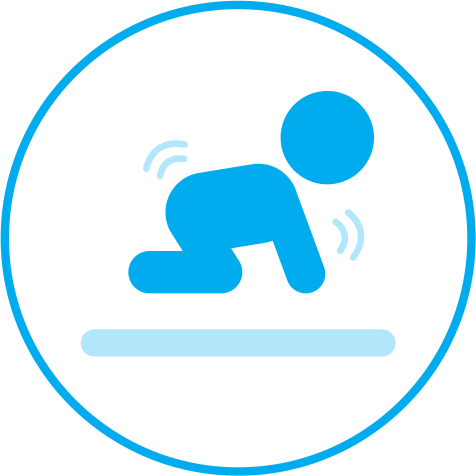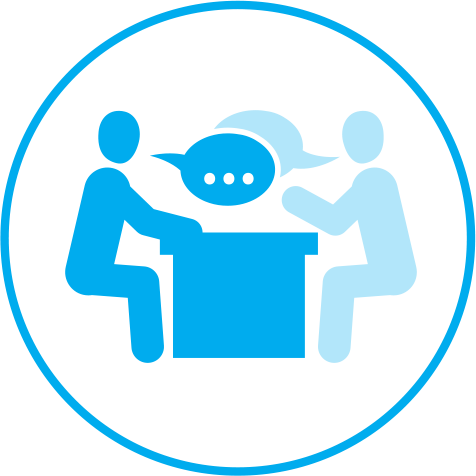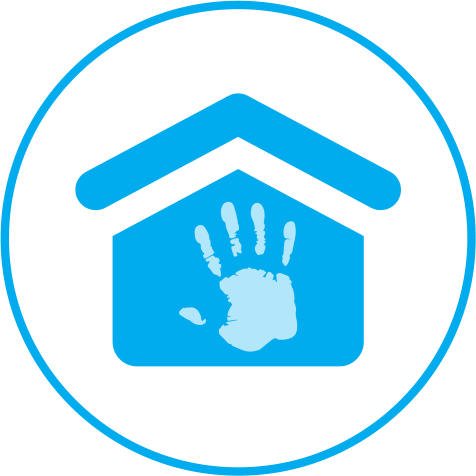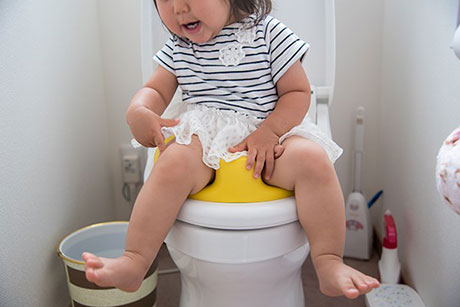Empowering Autism Families: The Indispensable Role of Parental Support in Applied Behavior Analysis
When you become a parent, it is equal parts exciting and terrifying. Many parents have broad or specific hopes and dreams for their children. Yet, at the end of the day, all you want is the best for your child and their future. Therefore, when a child is diagnosed with autism spectrum disorder (ASD), it can feel like your hopes and dreams have been dashed. However, your parental support makes you instrumental in giving your child tools to live their best life.
Feeling scared about an ASD diagnosis is not unusual or wrong; it takes time to adjust to life changes. However, you are not alone in figuring out how to navigate your new life. With support, you can build the tools you need to support your child’s long-term well-being. At 360 Behavioral Health, we offer parental support through parent and caregiver training to help you navigate the challenges of caring for a child with ASD.
While there are challenges you did not anticipate for your child, there are many rewards this new path can offer. Parental support is an opportunity to give your child and family tools to build a rewarding and meaningful life together. Now, you may wonder what parental support is. How can parental support help your child and family?
Impact of Autism Diagnosis on Parents
Whether it is getting a baby to sleep through the night or the first day of school, parenthood can be filled with joy and stress. Right now, you may feel sad and stressed, but with support, you can work through those feelings for your betterment. We know coming to terms with your child’s diagnosis does not happen overnight. However, taking steps to work through your feelings can be vital to your child’s long-term success.
If emotional distress is left unaddressed, it can fester and grow into unhealthy coping strategies. For example, you may focus on challenges, discount successes, negative self-talk, or withdraw from your support network. Many of the negative feelings associated with an ASD diagnosis often stem from negative perceptions about autism. Thus, tools for parental support can help you better understand that autism is truly a spectrum.
There is no one way to have autism. Your child’s challenges and strengths are unique to them, so their treatment should be customized to match their needs. With support, your child can learn and grow into the best version of themselves. Therefore, deeper awareness through parental support can help you dismantle those negative perceptions of ASD.
Building a more positive and accurate picture of what ASD looks like for your child can support your well-being. When you can reduce feelings of distress, it improves your resilience to whatever challenges life tries to throw at you. In addition, parental support training provides practical education for effective learning and growth for you and your child’s daily lives. While access to clinical support is important for your child’s treatment, your active participation as parental support is equally valuable.
Understanding your child’s unique experiences can increase your acceptance and recognition of your meaningful position as a source of support.
The Value of Acceptance and Education for Parents
Taking that first step toward accepting your child’s ASD diagnosis can feel difficult to imagine. However, acceptance can support the effectiveness of parental support training for you and your child. The many benefits of acceptance as a healthy coping strategy include reduced depressive symptoms and stress. In addition, acceptance can help parents and caregivers connect with each other and work together to navigate ASD treatment.
Leaning into acceptance gives you more space to respond to the challenges and the stress of life with more resilience. If you feel less overwhelmed by the idea of ASD, you can discover how powerful your parental support can be in your child’s day-to-day life. As Pediatric Medicine notes, your child is the primary target for early interventions, but they can also support you as a caregiver. Access to educational tools like parent-mediated interventions (PMIs) fosters support to address your child’s specific needs.
With training, you can increase your understanding of ASD. Moreover, through training, you can learn techniques to help your child improve their social, communication, and behavioral skills. Whether in a clinical setting, at home, or at the grocery store, parent and caregiver training can give you the support you need to help your child thrive. With access to education, your parental support grows as you learn, adapt, and fully engage in ASD interventions.
Now, you may wonder what parental support looks like in your family’s daily life. How can you use PMIs to empower your child to live their best life?
Benefits of Parental Support for Children
Sometimes, you just want to take your child to the store or make appointments a less distressing experience for them. PMIs teach you how to use reinforcement techniques with your child in your family’s daily life. There are a variety of PMIs you can learn to customize treatment to support your child’s specific needs. With therapeutic tools like PMIs, you truly can make everyday life more comfortable and manageable for your whole family.
Through PMIs, you can provide consistent reinforcement of your child’s training in their everyday life. In addition, PMIs can enable your child’s ability to apply the tools they learn to their real life. Through home and community settings, your child can engage in ways that apply to your family’s daily life. That consistent training allows you to provide parental support that can help your child today, tomorrow, and well into their future as they continue to grow.
Listed below are some of the different parental support PMIs that can be customized to support your child:
- Joint attention therapy
- Difficulty sharing focus on an object or area with another person
- Following another person’s gaze or following a pointed finger to look at something
- Therapy supports communication and language learning
- Supports specific shared attention skills such as pointing, showing, and coordinating looks between person and object
- Difficulty sharing focus on an object or area with another person
- Social communication therapy
- Increases ability to communicate and interact with others
- Verbal communication skills
- Increase ability to name people and things correctly
- Improved formation of words and sentences
- Improvements in speech rate and rhythm
- Able to express and explain emotions and feelings
- Nonverbal communication skills
- Learn sign language
- Utilize hand signals
- The use of picture symbols
- Social skills and behavior
- Learning how to engage in conversations
- Able to exhibit wanted behaviors during playtime with others
- Being a good sport when they lose a game
- Acting as a good host during play dates
- Adaptive response to teasing
- Learn how to make and maintain eye contact with others
- Able to maintain a socially accepted distance from others in social settings
- Verbal communication skills
- Increases ability to communicate and interact with others
- Behavioral therapy
- Focuses on reinforcing wanted behaviors and reducing unwanted behaviors
- Provides parental support on how to address maladaptive behaviors before, during, after, and between episodes
- Daily living skills
- Supports the ability to develop adaptive functioning skills to navigate daily life
- Hygiene
- Toileting
- Dressing
- Household safety
- Doing chores
- Preparing food
- Safety outside the home
- Telling time
- Time management
- Managing money
- Supports the ability to develop adaptive functioning skills to navigate daily life
In addition to PMIs to reinforce social, communication, and behavior skills, parental support can strengthen the parent-child relationship. Learning new terms and techniques for ASD can be overwhelming. You may even wonder if you know what is best for your child. Yet, in reality, you are the perfect person to provide the support your child needs to thrive.
You spend the most time with your child, so you know better than anyone what your child’s day-to-day needs are. Thus, increasing your education and treatment participation can support your child and deepen your connection to each other. A deeper awareness of ASD and the ability to connect to your child’s needs can help you feel more equipped to support your child. Listed below are some of the ways access to parental support tools can increase your confidence:
- Didactic instruction
- A lecture style or discussion teaching format
- Parents and caregivers are taught strategies and interventions to address childcare
- Gives parents and caregivers the space to ask questions and form an open discussion about their concerns
- A lecture style or discussion teaching format
- Role-playing
- An intervention strategy to support children in building wanted behavioral skills
- Parents and caregivers are able to practice the intervention with clinicians
- Gives parents and caregivers coaching and feedback to support competence in applying the intervention
- An intervention strategy to support children in building wanted behavioral skills
- Parent coaching and supervision
- Focuses on teaching proper implementation of interventions
- Supports parents and caregivers in real time to improve the application of interventions and strategies
- Focuses on teaching proper implementation of interventions
- Practice assignments and handouts
- Supportive in-person and virtual home visits
Feeling more competent in your ability to support your child can be empowering. PMIs put the power back in your hands to be a source of parental support you want to be for your child. Therefore, feeling more confident in your knowledge of ASD treatments gives you more space for parenting. When you can parent without being burdened by limited information, you can foster the fulfilling parent-child relationship you and your child deserve.
Improving the Parent-Child Relationship With Parental Support
From the terrible twos to pre-teens testing the boundaries of their independence, raising children has its ups and downs. While being a parent can be stressful, it is also one of the most rewarding things you can do with your life. Being the parent of a child with ASD has additional challenges like:
- ASD symptoms
- Co-occurring behavioral issues
- Navigating education and healthcare systems
- The financial cost of care resources
- Stigmatization
- Low community support resources
However, watching your child learn and grow can make even the most difficult moments well worth it. Seeing your child achieve skills that will support their independence and self-advocacy as they grow up is possible because of your parental support. In the same way that taking steps to learn about your child’s specific needs supports your well-being, it supports your child, too. Being surrounded by people who believe in them and hard work is instrumental to your child’s success.
Thus, the growing pains of life are made a little easier when you have a positive support system. Furthermore, when you feel less distressed and burdened by the challenges of ASD, you have more space to get to know your child. There is more space for affection, sensitivity to your child’s challenges, and engagement with your child.
Although a big part of parenting is making sure your children stay healthy and safe, it is about more than meeting their basic needs. As the American Psychological Association (APA) notes in “Parenting,” parenting is also about preparing children for life as productive adults and passing down important cultural values. The intangible inheritance of values and personality traits in parenting is made possible by healthy parent-child relationships. Thus, your use of parental support tools can help foster those positive bonds of insightfulness, acceptance, and sensitivity.
As Magda Di Renzo et al. note in “Parental Attunement, Insightfulness, and Acceptance of Child Diagnosis in Parents of Children With Autism: Clinical Implications,” parental insightfulness and acceptance go hand in hand with each other. Parental insightfulness is your ability to see things from your child’s point of view. Insightfulness coupled with acceptance allows you to be more sensitive and understanding of your child’s challenges and experiences.
Everyone wants to be understood and accepted, as your sense of belonging is often tied to your relationships with others. You can better understand your child, and they can better understand you when you have the time and space to enrich those relationships. Thus, PMIs can help contribute to your ability to guide your child and foster important connections for their well-being like:
- Social interaction
- Emotional security
- Supportive structure
- Routines
- Social norms
- Beliefs
- Cultural values
Therefore, fostering healthy family dynamics has a significant position in the overall health and interactions between family members. Parental support, like PMIs, provides strategies to support positive everyday interactions between you and your child. Through positive interactions, you enhance the quality of your parent-child relationship while promoting adaptive skills for the whole family.
In various settings and relationships, like work and school or siblings and parents, you have likely seen how misunderstandings and assumptions harm well-being. Whether you are at work or having lunch with a relative, difficulties in communication can create tension that erodes those environments and relationships. Thus, embracing interventions that foster communication and social interaction skills for your child can empower the whole family. For example, PMIs like parent-child interaction therapy (PCIT) emphasize the value of supporting parent-child interaction patterns.
Through PMIs, you are giving the parental support necessary to engage your child in skills that encourage prosocial behavior in a secure and nurturing relationship.
Building Skills for Parent-Mediated Interventions at 360 Behavioral Health
At 360 Behavioral Health, we believe in providing goal-focused and evidence-driven therapy to meet your child’s specific needs. Through applied behavior analysis (ABA), we are able to offer a variety of treatment options that can be customized to meet your child where they are in their development. Meeting your child where they are is a core part of our work at 360 Behavioral Health because every child’s experiences and needs are different. Every child with ASD deserves treatment and support that is compassionate and committed to creating meaningful changes in their life.
Meaningful growth and change happen in your child’s life when you have access to parental support tools. Through our parent and caregiver training service, we are dedicated to giving you tools to help your child live their best life. Moreover, parent and caregiver training gives you access to a community of support from your child’s clinicians and other parents.
Entering a world of support services filled with abbreviations for a variety of care approaches can feel overwhelming and confusing. However, access to a community of other parents going through similar growing pains with their children reminds you that you are not alone. One of the core elements of learning and growth is support and connection. When you have access to parental support tools, you are taking steps toward a successful future for your whole family. The door to effective functioning and independence through childhood and adulthood becomes more achievable when parental support is a central part of ASD treatment.
Helping your child with autism spectrum disorder (ASD) can feel overwhelming. Your child’s difficulties with communication, social interactions, and challenging behaviors can take a toll on the whole family’s well-being. However, with parental support, you can gain the skills and strategies to address your and your child’s needs. Parent-mediated interventions (PMIs) help you learn, practice, and apply different interventions to support your child’s growth in real-time. Through PMIs, your child can improve their social and life skills and reduce unhealthy behaviors. At 360 Behavioral Health, we believe you are an instrumental tool for your child’s success, and PMIs empower you to engage with your child to live their best life. Call us at 833 CARE 4 LIFE (833) 227-3454 to learn more today.

























